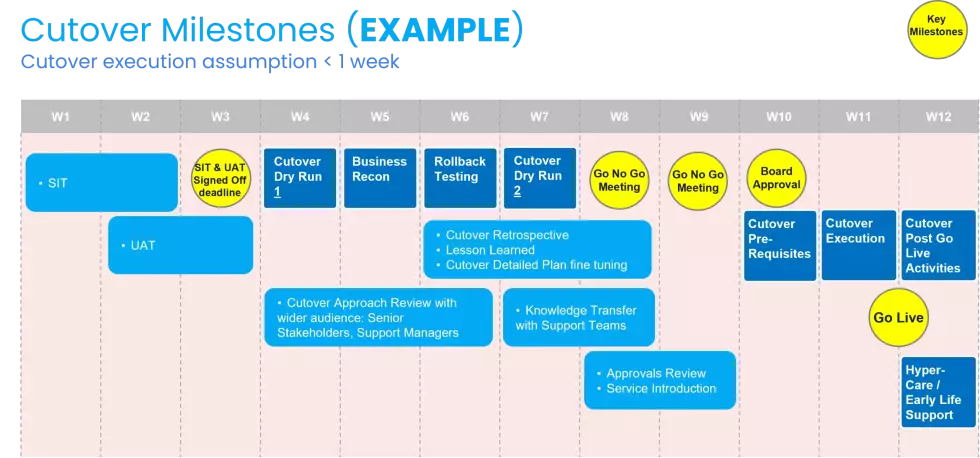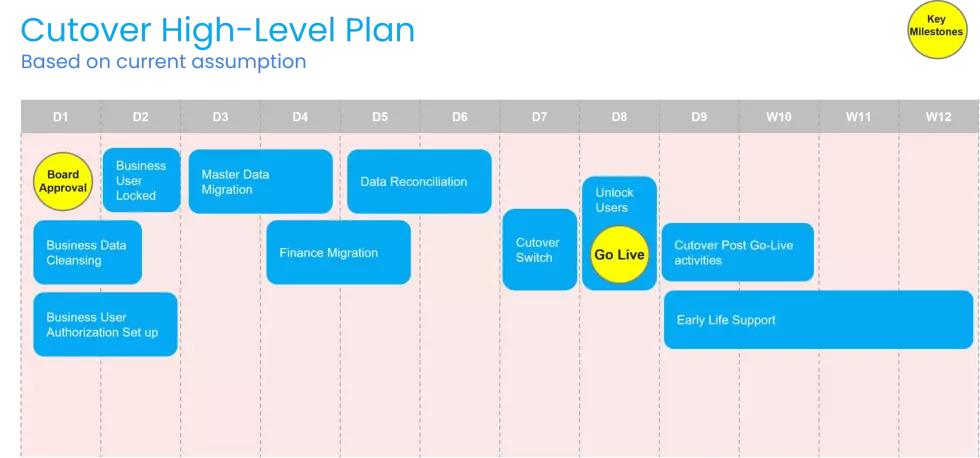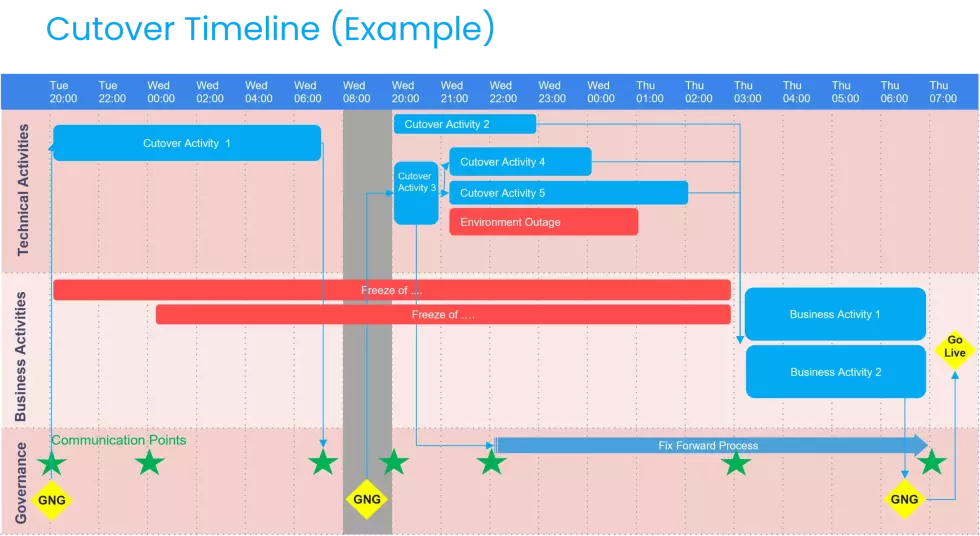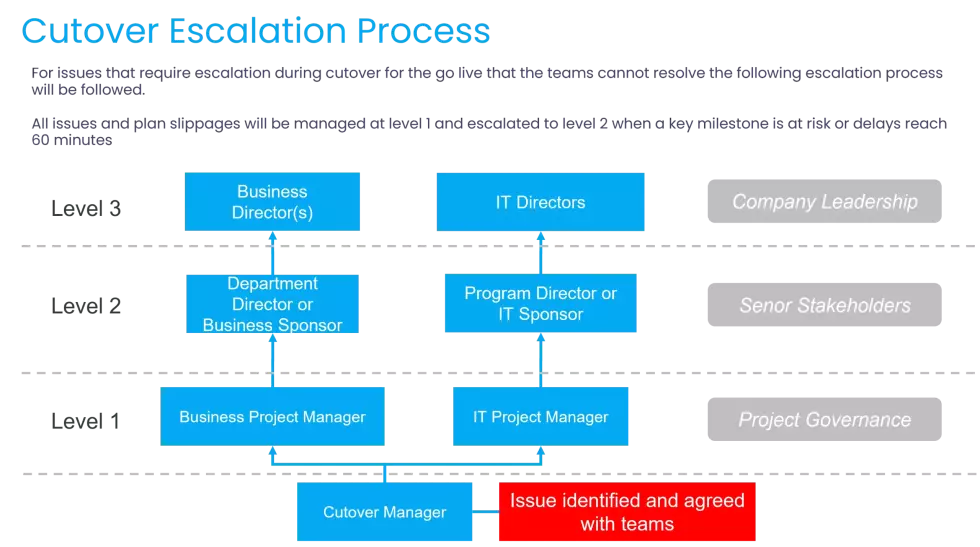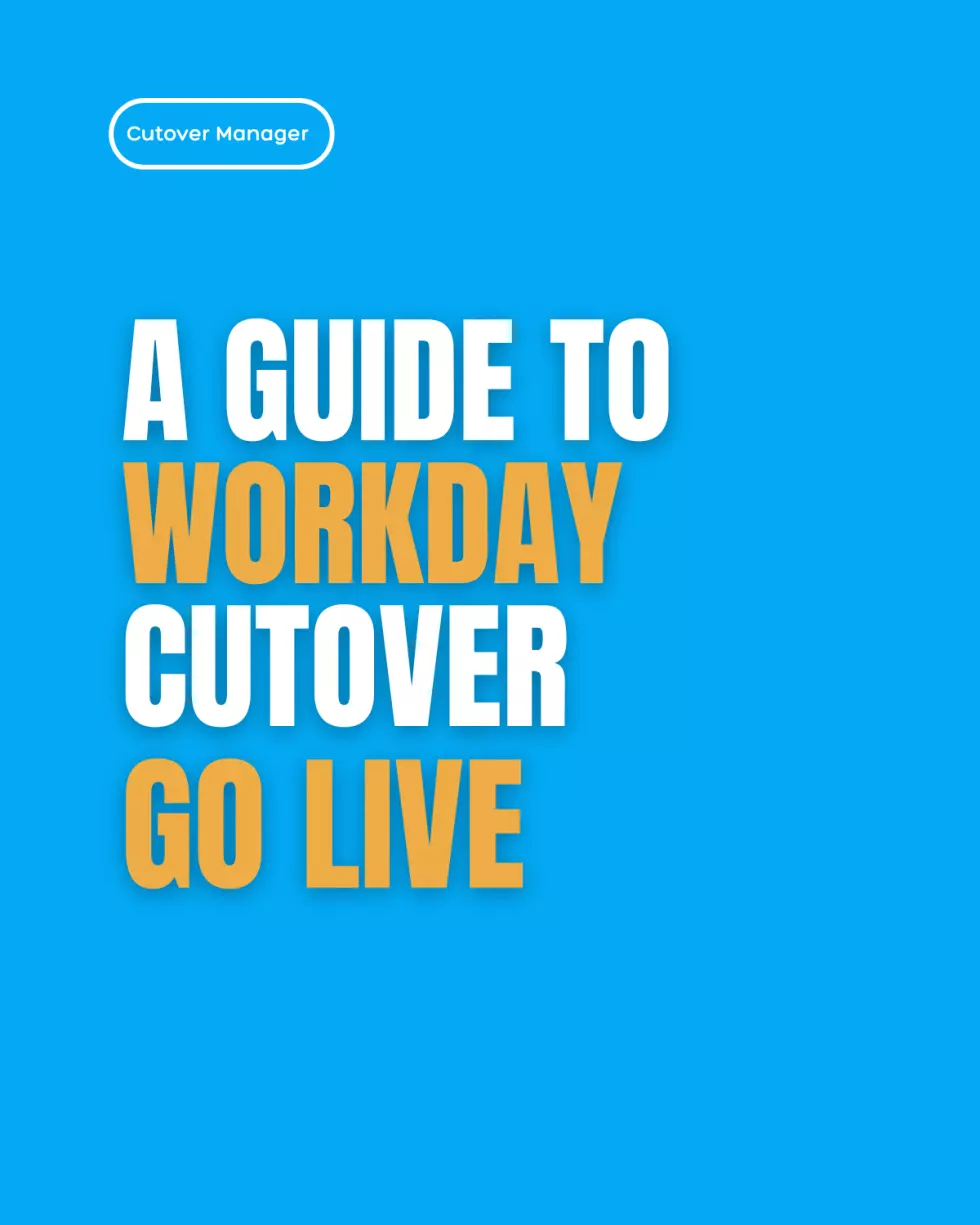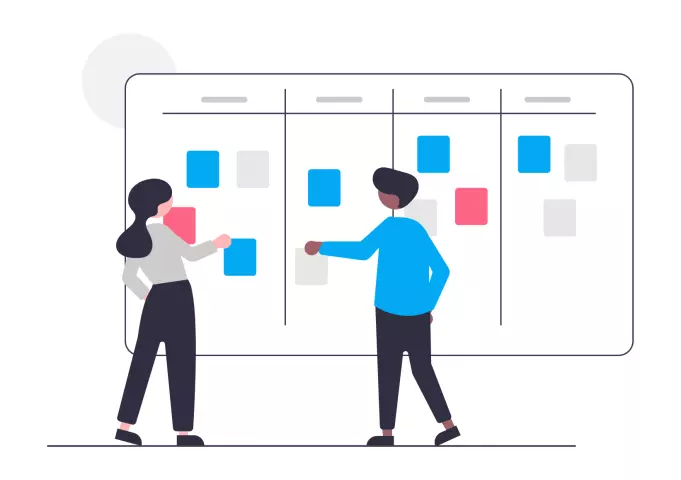
Cutover Approach Template
PPTX Version
Workday Cutover Approach Template
A Comprehensive Guide For Programme and Project or Cutover Managers
Get Started
Get Your Cutover Assessment Today?
Embarking on a cutover is a transformative journey.
Our mission is to make this journey as smooth and enjoyable as possible. With our expert guidance and tailored approach, a successful go-live is within reach for anyone.
Schedule a call today or drop a message on our contact form to start your journey to seamless transitions!


